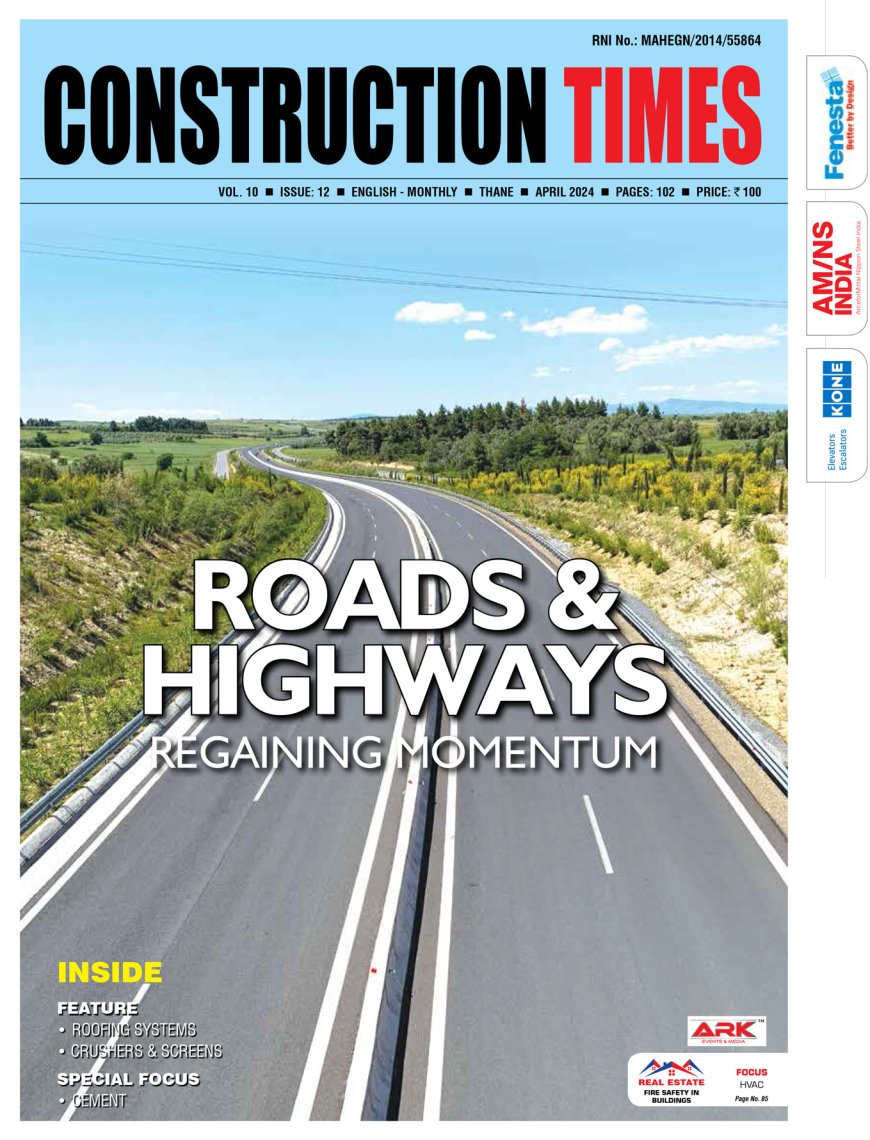Our future depends on how well we deal with deeper mining opportunities
In India's mining sector, several new trends are emerging, such as remote operations, health & safety, collaboration, and decarbonization. These factors will help the mining sector advance through 2022 and beyond by assisting it to meet production targets and maintain competitiveness.

- Arun Misra
CEO, Hindustan Zinc
What are the latest market trends of mining in India?
In India's mining sector, several new trends are emerging, such as remote operations, health & safety, collaboration, and decarbonization. These factors will help the mining sector advance through 2022 and beyond by assisting it to meet production targets and maintain competitiveness. Every aspect of mining is being transformed by Industry 4.0, which takes the form of artificial intelligence (AI), the industrial internet of things (IoT), and data analytics. These technologies improve the visualisation of the entire production cycle, optimise throughput, decrease downtime, and help operators lower their carbon footprint. Additionally, miners have been able to keep up production and safeguard personnel during the pandemic because of digital and automation systems. There is a need to improve reducing the risk for climate change because of the accelerated decarbonization plan and the increased focus on reporting emissions. Mining and metals
companies have become better at managing this challenge over time, but there are still opportunities to improve.
How are mining and mining methodologies evolving in India? How is digitalization picking up in the Indian mining industry?
In India, technology penetration in mine planning and operations continues to be lower than that in many leading economies. However, the country's mining industry is heading towards a technology-driven optimization process and envisages the use of progressively bigger-sized equipment. There are two types of mining techniques - surface/opencast mining and underground mining. Surface mining is more prevalent and produces most of the metallic ores and minerals (excluding petroleum and natural gas) in the country while the share of underground mining has been declining owing to huge capital requirements, long gestation periods, high manpower costs, and the non-availability of indigenous equipment.
Mining industry in India has been dominated by surface mining. However, due to various challenges presented by surface mining, the move towards underground mining is considered inevitable. This presents an opportunity for players to enter the market with underground mining technology. By bringing together data from on-field physical assets and enabling off-field remote and virtual access, mining companies can improve their abilities to analyze real-time information; augment their digital capacities; and create platforms to integrate their data, analytics, and workflows. Enhanced digitization and remote support of work activities offer an opportunity to take a more integrated view of assets, business units, and the organization as a whole. For the first time, many organizations have the breadth and depth of visibility into their operations needed to focus on driving system-level thinking and performance.
How is underground mining gaining prominence in India? What kind of equipment & solutions do you employ?
In India, underground operations are transitioning from conventional to autonomous. Soon, there will be hardly any deposits left near the surface, and hence the underground operation will become more prominent. Our future depends on how well we deal with deeper mining opportunities. With the most recent technological advances, we now have access to more capable intelligent machinery with moderately and completely automatic capabilities, allowing us to operate with the least amount of manual interference, higher safety, efficiency, and productivity. IoT and digital technologies are crucial technological innovations that have the potential to pay off greatly since they boost productivity and efficiency while also enabling real-time tracking of people and equipment. We anticipate making broad use of technology as a significant game changer. We have quickly adapted to the latest technologies to stay competitive and are supported by world-class OEMs like Sandvik, Epiroc, Normet, etc. Our target here in Hindustan Zinc is to become completely green after 2030, which is one of the biggest challenges that every industry faces. This is more so for us as we operate underground mining and smelting, which are hazardous processes.
What are the challenges encountered in the current mining scenario? What opportunities do you foresee after the revival of the mining policy?
The mining industry's biggest challenges to providing the growing demand for minerals from the world's population are addressed. Making solar energy affordable, producing energy from fusion, controlling the nitrogen cycle, and repairing and improving urban infrastructure are some of them. New management techniques and concepts must be implemented to greatly enhance mining operations' productivity and consequently boost their competitiveness. The global focus on climate change across industries has seen miners set net-zero pathways but achieving ambitions will require a realistic and balanced strategy. The supply chain is a new entrant to this year's ranking. Global disruption to trade is hitting the sector particularly hard, and in 2023, miners will be under pressure to fast-track the supply chain transformation that was underway before the Covid-19 pandemic. The mining and metals industry is responding with increasingly fundamental changes to business and operating structures as 2023 gets near. Many companies exploring the advantages of strategies to optimize, grow, and transform, new business models, present chances for miners to reposition themselves for a changing future. As economic growth and expectations evolve, companies that evaluate and modify their business models now will gain an advantage over competitors. The country's mining industry is steadily expanding because of the Central Government's policy renewal. Particularly coal mining is experiencing a resurgence as more mining contracts are being signed following the acceptance of private contractors for commercial coal mining. The country's suppliers of mining machinery and solutions have benefited from this. For the mining policy exploration of the deep-seated minerals needs to be focused on. A lot of work needs to be done and the private sector must play role in exploration too. An expected exponential increase in demand for essential minerals has caused the current geopolitical situation to raise numerous red flags regarding trade protectionism and mineral asset swaps worldwide. The same puts us on edge and necessitates a sharpening of concentration. Add this to India's internal obligations and climate commitments. India spends a meagre and conservative $170 mn yearly on exploration, which is overwhelmed by expenditures of over $1 bn by the United States, Australia, and Canada. The global exploration budget is $11.3 bn.
What are your plans for enhancing mining operations? What kind of advanced equipment and technologies will be added for this?
The future of mining work involves not only introducing new technology but also thinking about the roles they will play and how work will look in a new organisation that incorporates these new technologies. Moving towards integrated operations centres, or 'nerve centres', which assist in guiding decision-making across the value chain and reducing fragmented actions, will require mining businesses aiming to capitalise on these developments to take the future of work into account. The advanced equipment and technologies will allow more research and development in the mining industry, which includes look-ahead technologies, cutting and fragmentation, and ground control. Look-ahead technology allows for the detection and prevention of unexpected features and events, as well as the installation of engineering safeguards to prevent accidents and equipment damage. Predicting changes in the geology of the ore body, such as the narrowing or spreading of the mined strata, would also have significant economic benefits. The improvement of blast designs and the creation of hard rock cutting techniques and instruments are suggested areas for cutting and fragmentation research and development. The mining and underground construction companies would both benefit from research on the development of more mobile, quick, and reliable hard rock excavation. The goal of ground control is to engineer mining structures for intended uses using site knowledge and the laws of rock mechanics. Massive underground mine pillar failures, severe coal & rock bursts, open-pit slope failures, and roof and side falls are all examples of unanticipated system failures that fall short of the design requirements. Environmental issues associated with mining, such as slope instability, impoundment failures, and subsidence also highlight the need for greater consideration of the long-term impacts of ground control on mine closures and facility design.
Hits: 0







